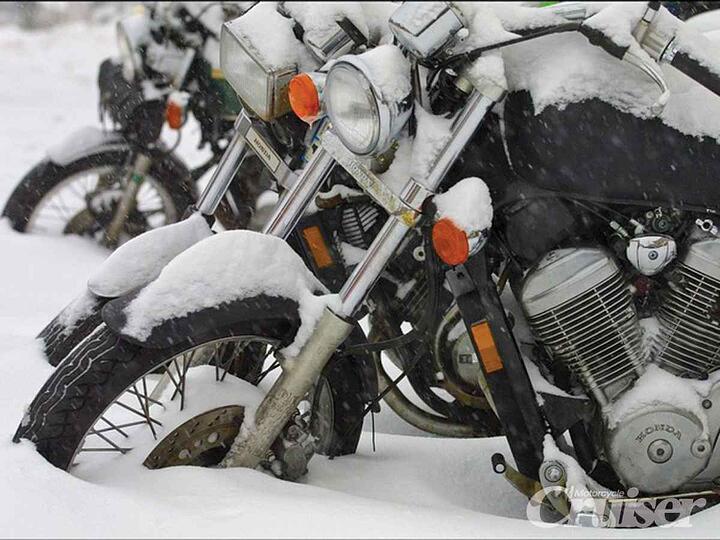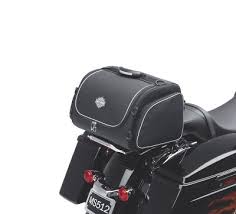Your helmet may not be doing it's job- and you may not even realize it.
If you've started researching for your new motorcycle helmet- or maybe even your first motorcycle helmet- you may have stumbled into a helpless and overwhelming state of information-overload.
You're likely realizing that there's so much more to this purchasing decision than a sleek design and a comfortable fit. Take a look at each of the life-critical components of a Harley-Davidson® helmet, illustrated below:

1. Rigid outer shell distributes force of impact and resists penetration.
2. EPS Impact-Absorbing Liner crushes to absorb energy of impact. Amount of EPS lining depends on outer-shell material and overall shell size.
3. Comfort Padding, plus Retention System, helps keep helmet in place and provides cushion between outer shell and head.
4. Retention System for safety. Always fasten while riding.
Why Is A Proper Helmet Fit So Important?
When you experience an impact (while you're wearing your helmet, of course), your helmets liner is designed to absorb this impact and reduce the trauma to your head. If it's too loose- even if it feels just right- you're leaving empty space between your head and the liner that'll be just enough to smash your skull into the liner, rather than having that force absorbed by it. Of course, if it's too tight, that'll just be downright uncomfortable. A well-fitted motorcycle helmet will prevent both of these scenarios, and you'll be significantly increasing your chances of a favorable outcome after an impact.
Maybe now you're even more stressed out than before about making this decision- but we're here to help.
We've got 5 steps that are sure to help relieve some of that stress:
- Choose a helmet style.
- Determine your size.
- Try the helmet on.
- Ensure a proper fit.
- Replace on a schedule.
1. Choose a helmet style
As you've probably already noticed, there's an overwhelming amount of helmets out the market. So, let's take a look at the primary helmet categories so you can approach the decision process with a bit more confidence.
Modular Helmets
Modular and full face helmets are similar in many ways. They both cover your head and face completely, but there are some notable differences.
.jpg?width=226&name=helmet1%20(1).jpg)
Modular helmets typically come equipped with a hinged design, which locks into place. This will give you the flexibility to easily swing your chinbar and faceshield up with the simple push of a button. This gives you, the rider, quick and easy access to your face, without having to completely remove it like you would with a one-piece, full face helmet.
The nice thing about modulars- unlike many full face helmets- is that they're usually designed to allow a refreshing flow of air in and out of the helmet, helping you to keep cool on those hot summer rides.
In addition, this type of helmet proves especially convenient for riders who wear glasses. If you've ever tried to slip on a full face helmet while wearing glasses, you know it's not fun to fumble your glasses into place and forcefully cram them back to your ears. Modular helmets allow you slip on the helmet like an open face helmet, gently adjust your glasses and flip down the face shield. Poof- magic.
Full Face Helmets
With a full face helmet, you have a one-piece unit that fully encloses your head. There's a face shield to protect your facial extremities, as well as an attached chinbar that sits at the bottom of your face.

While this type of helmet doesn't typically doesn't offer the refreshing airflow, like the modular helmet, they're built for the highest level of impact protection.
Your decision to choose a modular helmet vs. a full face helmet may just come down to your comfort and safety preferences.
Check out the latest helmet styles available NOW at Southside Harley
Open Face/Three-Quarter Helmets
Think of open face helmets as modulars, minus the face shield and chin bar. Your face is fully exposed and accessible, while the rest of your skull and the back of your head are encased within the shell.
 With an open face helmet, you'll experience the most airflow, but your face is left vulnerable to the elements and foreign objects you may encounter out on the road. For this reason, many riders who opt for open face helmets may also choose accessories to aid in protecting areas of their face, such as goggles, a balaclava, or even just a bandana to protect your mouth.
With an open face helmet, you'll experience the most airflow, but your face is left vulnerable to the elements and foreign objects you may encounter out on the road. For this reason, many riders who opt for open face helmets may also choose accessories to aid in protecting areas of their face, such as goggles, a balaclava, or even just a bandana to protect your mouth.
Open face helmets are usually a less expensive option, which makes them a popular choice among both new and experienced riders.
Again, the choice comes down to comfort and safety preferences. But, if you're new to the sport, ask any experienced rider and they'll tell you that it doesn't feel good to get smacked in the face with a June bug, a rock, or even a raindrop at 70mph. So please do something to protect your face!
Half Helmets

There's not much of a difference between half helmets and open face helmets. In fact, they're sometimes just classified as open face. This type of helmet is going to be the least restrictive and will protect the minimum surface area of your head. Your face is exposed, just like the open face style described above, but now you're removing protection from the back of your upper-neck and head. Think of it as half an eggshell slapped on the top of your head.
That's not to say you shouldn't opt for a half helmet, but do note that this style is the least protective option- so be certain that it's the right choice for you.
2. Determine Your Size
This may be more challenging than it sounds, as each helmet manufacturer or brand will have slightly differing sizing measurements. To get a general idea of what your size range you may be in, take a look at this Helmet Sizing Chart for a few of the most popular brands you may find at your local dealership. However, we'll always recommend coming in for a fitting before you make a purchase or order any helmet online.
3. Try The Helmet On
As you dive deeper into your helmet exploration, you may notice that some helmets just don't feel as comfortable as others. That's normal. You may go in to this process with a preferred helmet style in mind, but the truth is that everyone's head is inherently different in size, shape and dimension. That means you'll just need to accept that your first choice of helmet simply may not fit correctly. It could be how it's designed; it could be the brand; it could be the abnormal shape of your noggin. Don't get discouraged, just keep exploring and try out different styles and models.
4. Check for proper fit
Once you've found a helmet that feels comfortable, there's a helmet-fitting process that will help you determine if it's going to perform as it should, in the event of an incident. It's not enough to just feel comfortable.
We recommend downloading our official "Motorcycle Helmet Fitting Pocket Guide" for detailed instructions. You can print it out or simply take a screenshot so you can bring your guide with you as you search for that perfect helmet.
5. Replace On A Schedule
EVEN IF A HELMET DOES NOT APPEAR DAMAGED, IT IS HIGHLY RECOMMENDED BY MOST MOTORCYCLE SAFETY FOUNDATIONS TO REPLACE YOUR HELMET AT LEAST EVERY 3-5 YEARS!
Why?
Interior protective elements, such as helmet liners and eps structures (impact absorbing layer), deteriorate over time and lose effectiveness in safety, comfort and fit. This is crucial to be aware of because you may not physically see this deterioration.
Helmets that show dents in the shell or fraying of the straps should be replaced immediately!
Conclusion
Did you get all that? It's okay if you didn't- save this page as a resource and you'll have everything you need to get started in your hunt for the right motorcycle helmet! Make sure you download your Helmet Fitting Pocket Guide, and come on in to Southside Harley. We're always here to address your concerns and will happily help you along to get you fitted properly for that new helmet. Ride safe and ride on!















